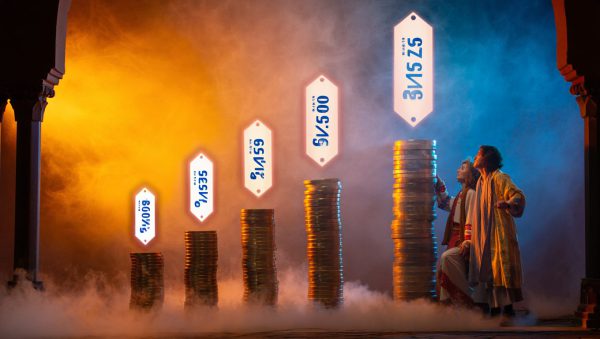
What Causes Inflation in Economics? Uncovered!
Why does the cost of living seem to rise incessantly, eroding the value of every dollar you earn? Inflation is one of the most misunderstood forces in economics—both feared and inevitable, it impacts every corner of society. Yet, despite its omnipresence, few truly grasp its causes or its consequences. What creates this upward pressure on prices? Is it the result of reckless policies, market psychology, or something far more complex? And most importantly, how can we navigate its effects strategically?
Inflation isn’t just an economic event; it’s a reflection of human behaviour, shaped by collective decisions, psychological biases, and the interplay of supply, demand, and monetary policy. To understand what causes inflation in economics, we must dig deeper into these forces, uncovering the mechanisms that drive it and the strategies that can shield us from its impact. This essay will explore the roots of inflation, the role of mass psychology, and how savvy investors can turn this seemingly negative force into an opportunity for growth.
The Mechanics of Inflation: A Complex Dance of Supply, Demand, and Money
At its core, inflation represents a rise in the general price level of goods and services over time, leading to a decline in purchasing power. But what causes this phenomenon? Economists commonly identify three primary drivers of inflation: demand-pull inflation, cost-push inflation, and monetary inflation.
1. Demand-Pull Inflation: This occurs when demand for goods and services outpaces supply. Imagine an economy where consumers suddenly have more disposable income, perhaps due to tax cuts, wage increases, or government stimulus. They begin spending more, creating higher demand. Businesses, unable to keep up with this surge, raise prices. This is the classic case of “too much money chasing too few goods.” A prime example is the post-pandemic rebound in 2021, when pent-up demand and government stimulus caused inflation to spike as supply chains struggled to recover.
2. Cost-Push Inflation: Here, inflation is driven by rising production costs. When the cost of raw materials, energy, or labour increases, businesses pass these costs onto consumers in the form of higher prices. For instance, during the 1970s, oil prices skyrocketed due to geopolitical tensions, triggering widespread inflation as energy costs filtered through the economy.
3. Monetary Inflation: This is perhaps the most contentious driver of inflation and occurs when there is an excessive increase in the money supply. When central banks flood the economy with cash—whether through quantitative easing or low interest rates—each dollar loses value, leading to higher prices. As Milton Friedman famously stated, “Inflation is always and everywhere a monetary phenomenon.” The post-2008 financial crisis era, characterised by unprecedented monetary stimulus, provides a modern example of how loose monetary policy can contribute to inflationary pressures.
While these are the mechanical causes of inflation, they tell only part of the story. To fully understand inflation, we must examine how human behaviour and mass psychology amplify its effects.
The Psychology of Inflation: Fear, Greed, and Herd Mentality
Inflation is as much a psychological phenomenon as it is an economic one. Expectations play a critical role in its development and persistence. When people believe prices will rise, they change their behaviour in ways that often fulfil their expectations, creating a self-reinforcing cycle.
1. Inflation Expectations: Imagine a business owner who anticipates rising costs. To stay ahead, they preemptively raise prices, even if their current costs haven’t increased yet. Similarly, workers demand higher wages to keep up with expected inflation, which then raises production costs and pushes prices higher. This cycle, driven by expectations, fuels inflation even in the absence of immediate economic pressures.
2. Fear-Driven Spending: Fear of future price increases can prompt consumers to accelerate their purchases. For example, during periods of high inflation, people may rush to buy homes, cars, or durable goods before prices rise further. This surge in demand exacerbates inflationary pressures, creating a vicious cycle.
3. Herd Behaviour: Mass psychology often amplifies inflationary trends. When consumers see others stockpiling goods or businesses raising prices, they follow suit, assuming it’s the rational choice. Herd mentality reinforces inflation by driving collective behaviour that pushes demand higher or accelerates price increases. The toilet paper shortages during the early days of the COVID-19 pandemic are a striking example of how herd behaviour can distort markets, even in non-inflationary contexts.
As the Stoic philosopher Epictetus observed, “It’s not what happens to you, but how you react to it that matters.” In the context of inflation, our reactions—whether rational or fear-driven—often determine the severity of its impact. Understanding these psychological dynamics is critical for managing inflation effectively, both as policymakers and as individuals.
Historical Examples of Inflation: Lessons from the Past
To understand the causes and consequences of inflation, we can look to history, which offers valuable lessons about how inflation arises and how it affects economies and societies.
1. The Weimar Republic (1920s): The hyperinflation of post-World War I Germany remains one of the most infamous examples of monetary inflation. Faced with war reparations and economic collapse, the German government printed money at an unprecedented rate, causing prices to spiral out of control. At its peak, the price of a loaf of bread rose from 250 marks in January 1923 to 200 billion marks by November of the same year. This devastating episode highlights the dangers of unchecked money supply expansion.
2. The 1970s Stagflation: The combination of high inflation and stagnant economic growth during the 1970s defied traditional economic theories. Triggered by oil price shocks and exacerbated by wage-price spirals, stagflation demonstrated how cost-push factors and inflation expectations could disrupt economies. Central banks struggled to combat inflation, leading to significant economic and political consequences.
3. The Post-Pandemic Inflation Surge (2021-2022): In the wake of the COVID-19 pandemic, inflation surged as supply chain disruptions, labour shortages, and government stimulus created a perfect storm. This episode illustrates how demand-pull and cost-push factors can interact, with inflation expectations further amplifying the problem.
These examples underscore the complexity of inflation and the importance of addressing its root causes. While each case had unique circumstances, they all reveal the interplay between economic forces and human behaviour in driving inflationary trends.
Strategies for Navigating Inflation as an Investor
While inflation poses challenges, it also creates opportunities for savvy investors who understand its dynamics. By adopting a strategic approach, you can protect your wealth and even profit from inflationary environments.
1. Invest in Real Assets: Real assets like real estate, commodities, and infrastructure tend to perform well during inflationary periods. These assets have intrinsic value and often appreciate as prices rise, providing a hedge against inflation.
2. Focus on Companies with Pricing Power: Businesses that can pass on rising costs to consumers without losing demand are better positioned to thrive during inflation. Look for companies with strong brands, essential products, or monopolistic market positions.
3. Diversify into Inflation-Protected Securities: Treasury Inflation-Protected Securities (TIPS) and other inflation-linked bonds can help preserve purchasing power by adjusting their value based on inflation rates.
4. Consider Commodities and Precious Metals: Commodities like oil, gold, and agricultural products often rise in price during inflationary periods. Allocating a portion of your portfolio to these assets can provide a hedge against inflation.
5. Maintain a Long-Term Perspective: While inflation can create short-term volatility, long-term investors who remain disciplined and focus on fundamentals are better equipped to weather its effects. Avoid panic-driven decisions and stay committed to your investment strategy.
Conclusion: Mastering the Forces of Inflation
Inflation is an inevitable part of economic life, driven by a complex interplay of supply, demand, monetary policy, and human behaviour. By understanding what causes inflation in economics, we can better anticipate its effects and develop strategies to navigate it effectively. Whether through investing in real assets, focusing on companies with pricing power, or adopting a disciplined, long-term approach, there are ways to protect and grow your wealth even in inflationary environments.
As Marcus Aurelius once said, “You have power over your mind—not outside events. Realise this, and you will find strength.” Inflation is not an insurmountable force; it is a challenge that can be met with knowledge, strategy, and resilience. By mastering the dynamics of inflation and maintaining clarity in the face of uncertainty, you can turn this economic phenomenon into an opportunity for growth and success.










